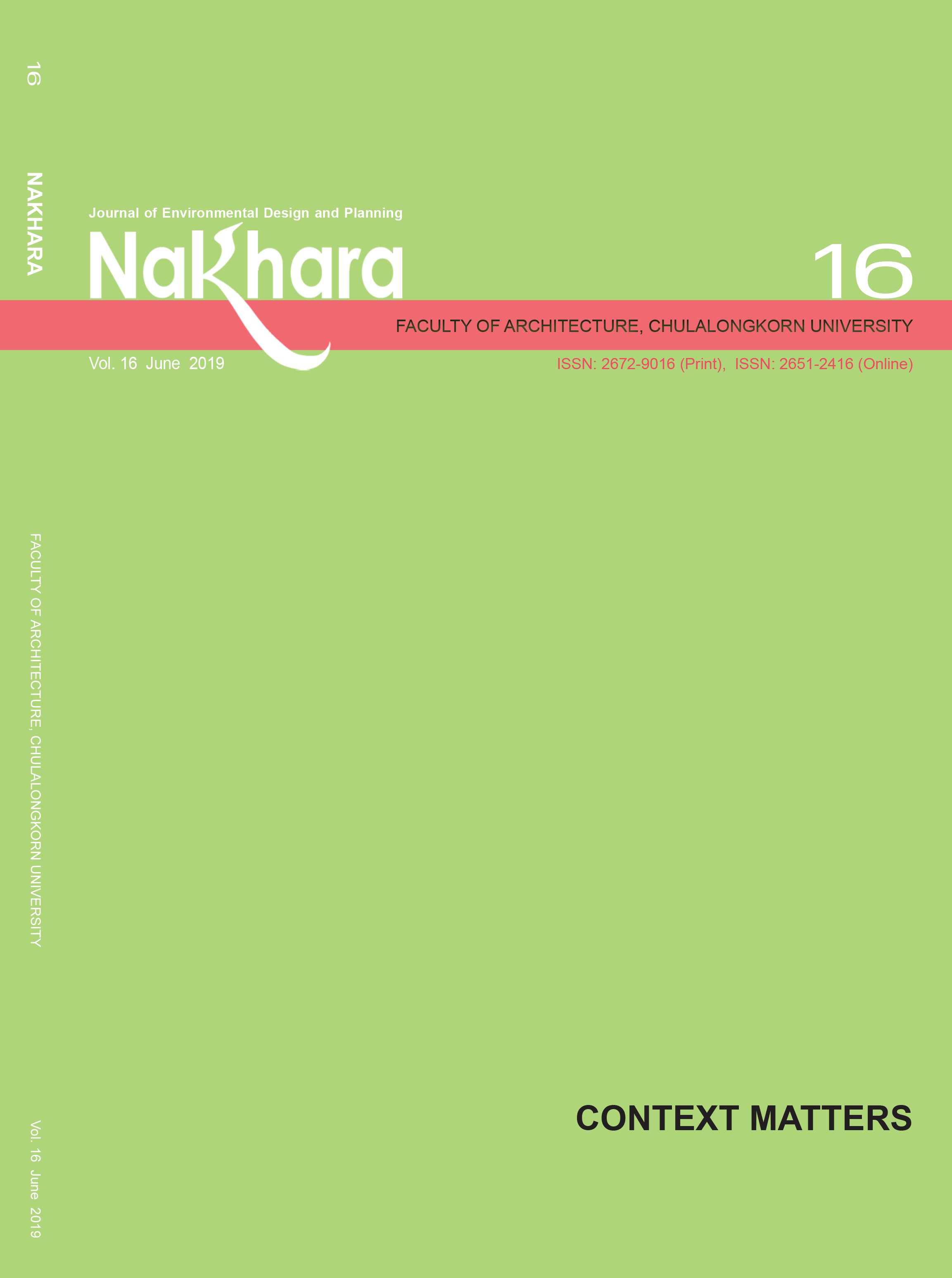Effects of Growth on Urban Morphology and Land Use Pattern in Mymensingh: A Historic Town of Bangladesh
Main Article Content
Abstract
This study explores the effects of urban growth and morphological transformation on land use pattern of a historic town of Bangladesh, Mymensingh by analyzing the changes of land use pattern and urban morphology through Space Syntax analysis. Mymensingh, one of the oldest and historic towns of Bangladesh, lies along the river Brahmaputra. The town was developed as an urban area during the period of British colonists more than two hundred years ago. The juxtaposition of the land uses by the British colonists along with the local inhabitants created a different and unique types of land use pattern within the town area where local establishments were in-filled within the colonial establishments. Through ages, due to the natural process of urban growth the town expands and the small colonial town turns into a larger one but the study result shows that still the strong effects of historic developments both local and colonial and the presence of the river acts as a strong guiding force for the growth and transformation of the town.
Article Details

This work is licensed under a Creative Commons Attribution-NonCommercial-NoDerivatives 4.0 International License.
References
Aziz, N. (2016). Study of pedestrian movement in relation to spatial configuration and land-use pattern in the context of Mymensingh town (unpublished thesis dissertation). Department of Architecture, Bangladesh University of Engineering and Technology, Dhaka, Bangladesh.
Bangladesh Bureau of Statistics. (2005). Statistical pocketbook: Bangladesh 2003. Dhaka.
Bangladesh Bureau ofStatistics. (2013). District Statistics 2011 Mymensingh, Statistics and Informatics Division (Sid) Ministry of Planning Government of The People’s Republic Of Bangladesh. Retrieved from http://203.112.218.65:8008/WebTestApplication/userfiles/Image/District%20Statistics/Mymensingh.pdf
Cambra, P., Moura, F., & Goncalves, A. (2017). On The correlation of pedestrian flows to urban environment measures: A space syntax and walkability analysis comparison case. Proceedings of the 11th Space Syntax Symposium, Lisbon.
Dutt, A. (1994). City form of China and India in global perspective in the Asian city: Processes of development characteristics and planning. n.p.
Hillier, B., & Hanson, J. (1984). The social logic of space. Cambridge: Cambridge University Press.
Hillier, B., Hanson, J., & Graham, H. (1987). Ideas are in things: An application of the space syntax method to discovering house genotypes. Environment and Planning B: Planning and Design, 14(4), 363–385.
Hillier, B., Penn, A., Hanson, J., Grajewski, T., & Xu, J., (1993). Natural movement: Or, configuration and attraction in urban pedestrian movement. Environment and Planning B: Planning and Design, 20, 29-66.
Hillier, B. (1996). Cities as movement economies. Urban Design International, 1 (1), 41–60. Retrieved from https://doi.org/ 10.1057/udi.1996.5
Karimi, K. (1997). The spatial logic of organic cities in Iran and the United Kingdom. Proceedings of the First International Space Syntax Symposium, London.
Klarqvist, B. (1993). A space syntax glossary. In Nordisk Arkitektur for Sknin G, p. 2. n.p.
Koohsari, J. M., Andrew, T., Kaczynski, Gavin, R., Mcormack, & Sugiyama, T. (2014). Using space syntax to assess the built environment for physical activity: applications to research on parks and public open spaces. Leisure Sciences: An Interdisciplinary Journal, 36(2), 206-216.
Kostakos, V. (2010). Space syntax and pervasive systems. In B. Jiang & X. Yao (Eds.), Geospatial analysis and modelling of urban structure and dynamics (pp. 31–52). Dordrecht: Springer.
Liu, X., and Jiang, B. (2012). Defining and generating axial lines from street center lines for better understanding of urban morphologies. International Journal of Geographical Information Science, 1–12.
McGee, T.G. (1971). The Urbanization process in the Third World. London: n.p.
Özbil, A., Yeşiltepe, D., & Argin, G., (2015, November). Modeling walkability: The effects of street design, street-network configuration and land-use on pedestrian movement. A|Z ITU Journal of the Faculty of Architecture, 12(3), 189-207. REtrieved from http://www.journalagent.com/itujfa/pdfs/ ITUJFA_12_3_189_207.pdf
Peponis, J., & Wineman, J. (2002). Spatial structure of environment and behavior. In R. B. Bechtel & A. Churchman
(Eds.), Handbook of environmental psychology (pp. 271–291). New York, NY.: Wiley.
Sarker F. A. (n.d.). Urbanization in Bangladesh- Extent and reasons of the relatively recent phenomenon of Urbanization in Bangladesh. Retrieved from https://s ites.google.com/site/bdguiber/home/6-english/
bangladesh/emerging-bangladesh/-urbanization-inbangladesh
Saravanan, P., Padmasri, S. & Lakshmi, K. (2012). Urban sprawl and its transformation over land use / land cover using geo informatics: A case study on Madurai Fringe area. Bonfring International Journal of Industrial Engineering and Management Science, 2 ( Special Issue 1), 41.
Topçu, M., Topçu, K., & Deniz, K. (2007). Movement economy dependent on urban design. In Proceedings of 6th International Space Syntax Symposium, Istanbul. Istanbul.
UN HABITAT III. (2017). Regional report Asia and The Pacific “Transformative urbanization for a resilient Asia-Pacific”. Retrieved from http://habitat3.org/wpcontent/uploads/Habitat-III-Regional-Report-Asia-Pacific.pdf
United Nations Human Settlements Programme (UNHabitat) & The United Nations Economic and Social Commission for Asia and the Pacific-ESCAP. (2015). The State of Asian and Pacific cities 2015: Urban transformations shifting from quantity to quality. Retrieved from https://www. unescap.org/sites/default/files/The%20State%20of%20
Asian%20and%20Pacific%20Cities%202015.pdf
WORLD BANK. (2016). Leveraging urbanization in South Asia: Managing spatial transformation for prosperity and Livability. Peter Ellis and Mark Roberts (Eds.). Retrieved from https://openknowledge.worldbank.org/bitstream/handle/
10986/22549/9781464806629.pdf

